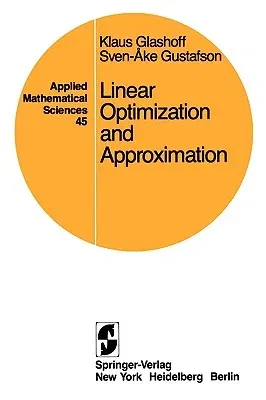K Glashoff
(Author)Linear Optimization and Approximation: An Introduction to the Theoretical Analysis and Numerical Treatment of Semi-Infinite Programs (Softcover ReprinPaperback - Softcover Reprint of the Original 1st 1983, 13 April 1983

Qty
1
Turbo
Ships in 2 - 3 days
In Stock
Free Delivery
Cash on Delivery
15 Days
Free Returns
Secure Checkout

Part of Series
Applied Mathematical Sciences
Part of Series
Applied Mathematical Sciences (Springer)
Part of Series
Comprehensive Manuals of Surgical Specialties
Print Length
212 pages
Language
English
Publisher
Springer
Date Published
13 Apr 1983
ISBN-10
0387908579
ISBN-13
9780387908571
Description
Product Details
Authors:
Book Edition:
Softcover Reprint of the Original 1st 1983
Book Format:
Paperback
Country of Origin:
US
Date Published:
13 April 1983
Dimensions:
23.39 x
15.6 x
1.14 cm
ISBN-10:
0387908579
ISBN-13:
9780387908571
Language:
English
Location:
New York, NY
Pages:
212
Publisher:
Series:
Weight:
303.91 gm